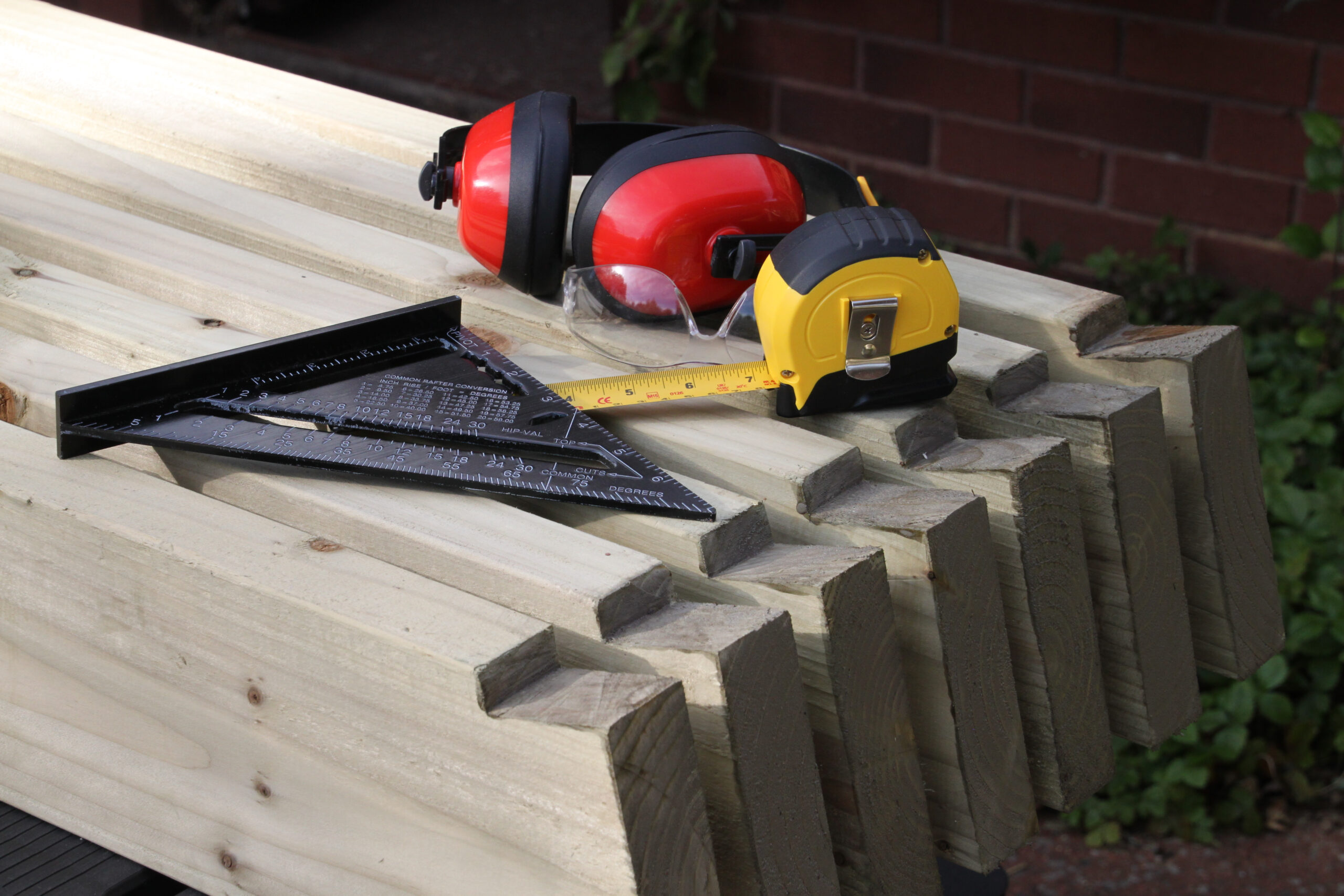

Enhancing your home with a pergola can instantly transform your outdoor living experience. Even the most basic pergolas can create a comforting shade, transforming an outdoor area into a cozy relaxation haven. However, enhancing this basic structure with some stylish and functional upgrades can introduce a resort-quality luxury to your everyday outdoor living.
When building a pergola for your home, there are essentially two paths you can take. You can choose to build it yourself, or engage an experienced pergola contractor to help guide your design choices and handle the installation of the structure. Let’s take a look at some of the pros and cons of deciding to DIY pergola projects versus working with a professional pergola contractor.
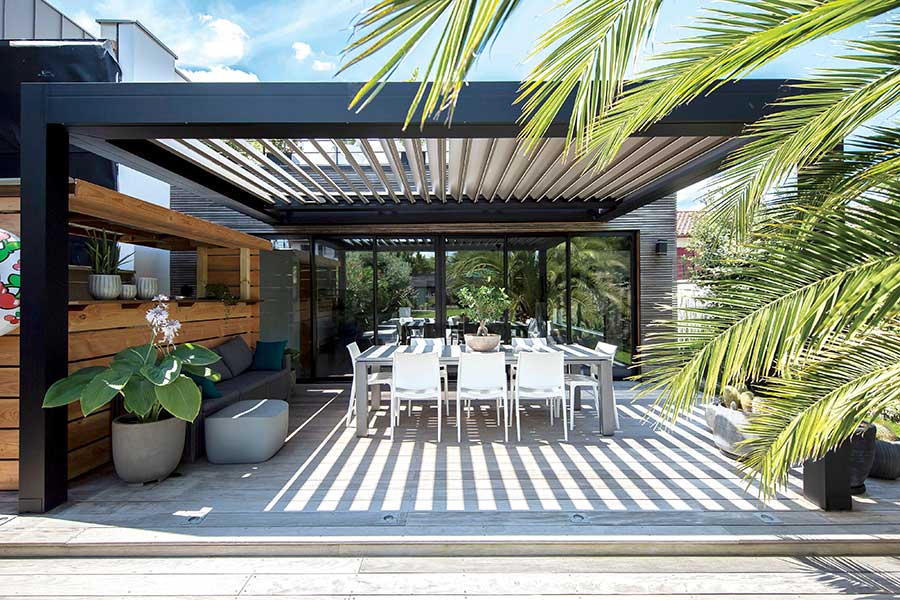
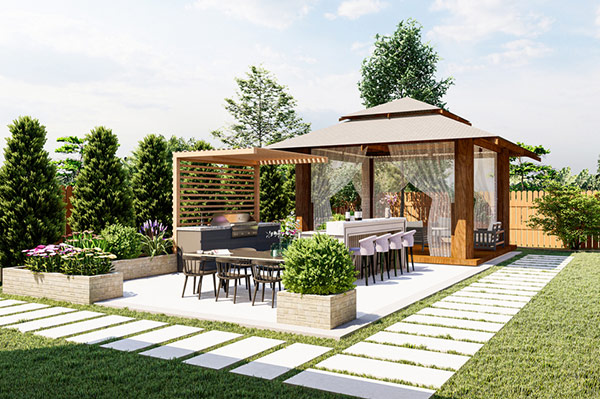
The material used greatly influences the final aesthetics and durability of a pergola. Many DIY enthusiasts often opt for ready-made wooden pergola plans. Despite wood being a popular choice, it doesn’t promise longevity, especially under constant exposure to the sun, rain, and wind. Vinyl pergolas might be slightly better in handling rain but are prone to damage over time. The alternative is to choose an all-aluminum pergola like those that we design and build here at SYZYGY Global. They not only withstand the elements but also maintain their visual appeal for years.
When building your own pergola, you’ll need to decide between a pergola attached to the house vs. freestanding. While the former seamlessly extends indoor spaces, the latter offers dedicated shade, especially on decks or in open yards. Both choices present DIY challenges. An incorrectly installed attached pergola could damage your home and cause drainage issues. A freestanding one requires sturdy anchor points for South Florida’s wind conditions. Mistakes in either could lead to seeking a pergola contractor for corrections.
Modern pergolas designed by professionals offer a plethora of luxury features, such as motorized roofs, integrated lighting, and retractable sun shades. While DIY versions can incorporate some of these elements, they might not achieve the sleek integration and functionality of a professionally designed pergola.
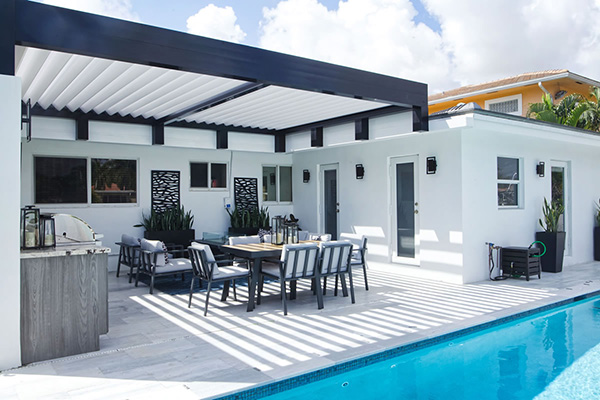
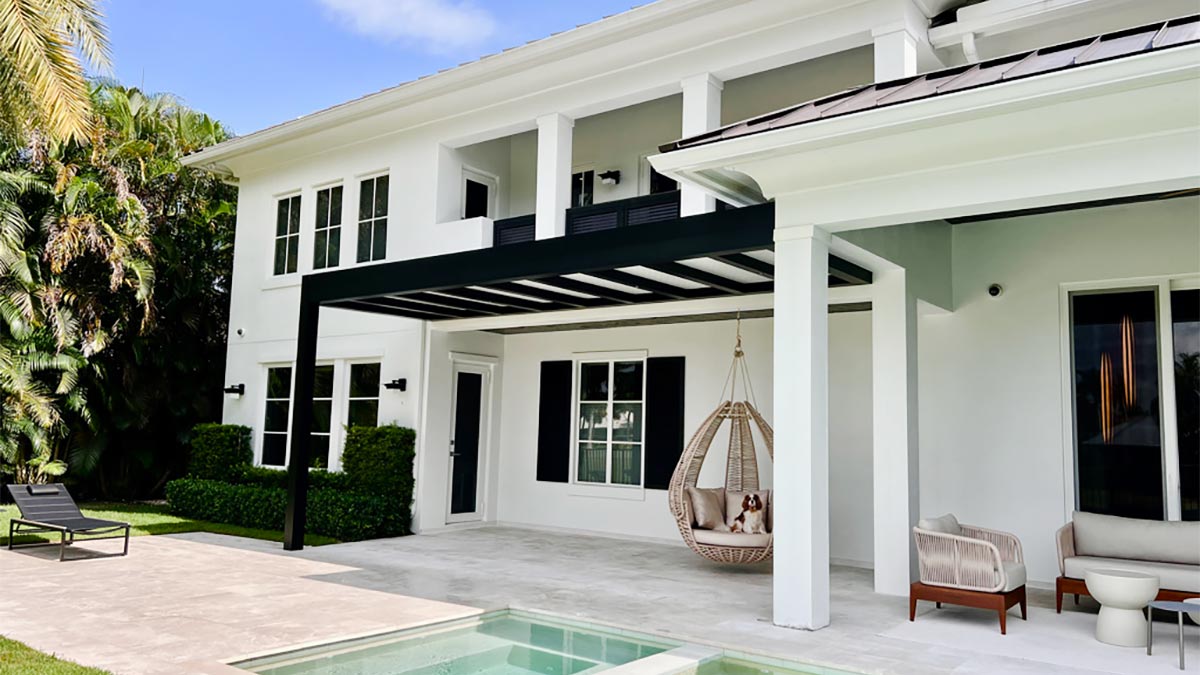
The major advantage to building your own pergola is in the cost savings on labor. Fabricating a wooden pergola will take significant time investment as you cut columns, stringers and louvers to fit the DIY plans, but if you do the work yourself and you work for free. Hoisting the pergola frame aloft will also necessitate some free assistance from friends or family. While choosing to DIY a pergola may save on overall pergola cost, taking on this project is really only for seasoned DIYers. Beyond the physical labor involved, you will also need to self-navigate the often-confusing layers of state and local building codes, and the necessary permit approvals from local and/or county building departments, homeowners’ associations, etc.
Another advantage of DIYing your wooden pergola is that you know exactly where you will be for a full weekend every spring. Wooden pergolas in Florida require yearly upkeep due to sun damage and rot. This includes resealing, repainting, and possibly replacing decayed sections. Without a proper gutter system, damaged tiles near the pergola floor might also need replacement.
Opting for a DIY pergola, through purchased plans or a kit, can be a fulfilling endeavor for seasoned DIY enthusiasts. However, working with an expert pergola contractor not only eases the process but also introduces a world of luxury options for your outdoor space. If you’re contemplating a custom pergola, consulting with professionals might save you from potential DIY pitfalls.

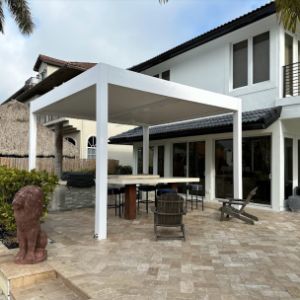
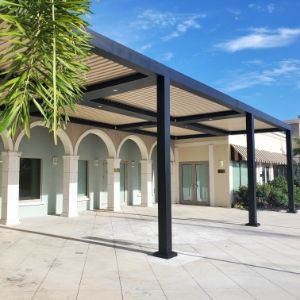
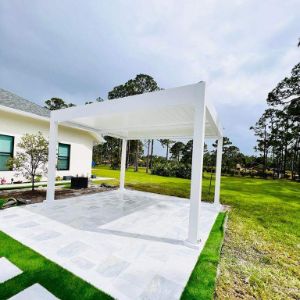
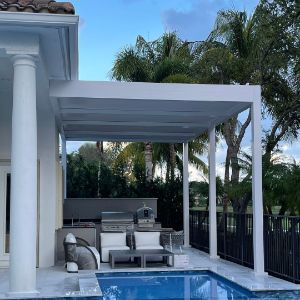
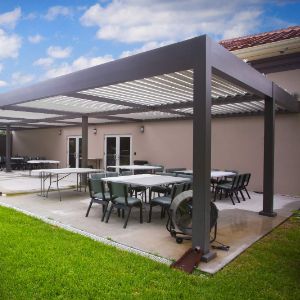

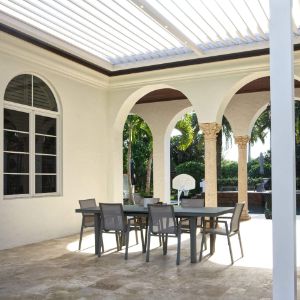


















Name
